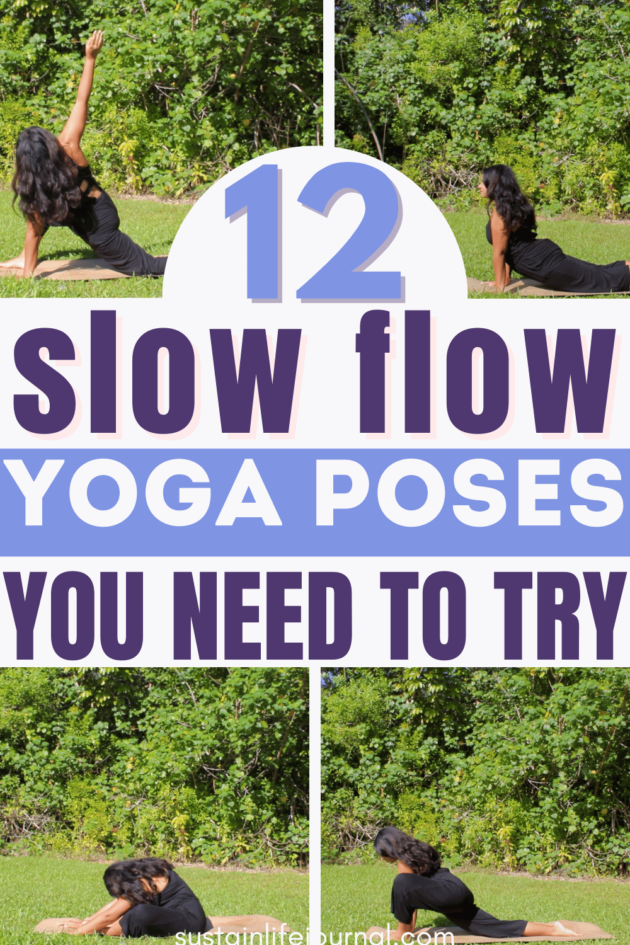Must Try Gentle Slow Flow Yoga Sequence Perfect for All Levels
This post is all about the best poses for a slow-flow yoga sequence.
Do you ever find yourself in a power yoga class struggling to catch your breath and tame the thoughts racing through your mind?
A slow flow yoga sequence can give you the space to tune in deeper to your body and mind.
This post will be completely biased because my teaching style is all about the slow mindful movements that hatha yoga offers rather than the quick transitions you will find in a vinyasa class.
I’ve been practicing yoga for over a decade and out of all the classes I have taken I always find my way back to slower-paced flows.
Each style has its benefits but let’s explore some ways to make the most of the grounding asanas that you will find in a slow flow yoga class.
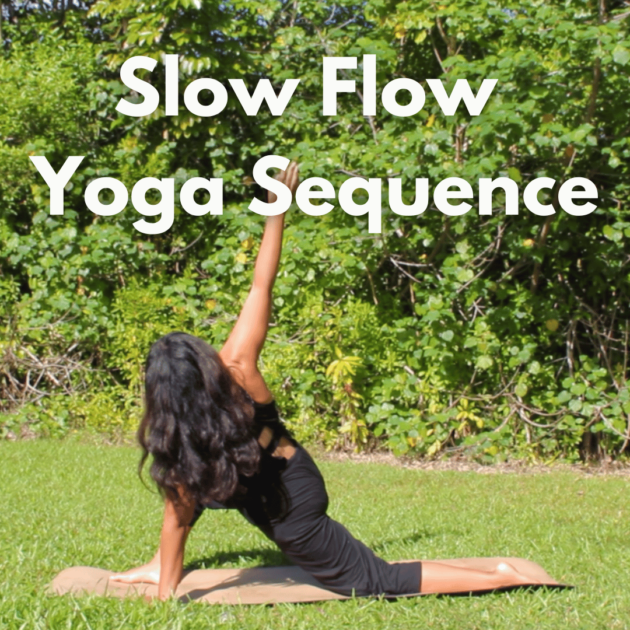
Slow flow yoga benefits
- You have time to try different modifications to see what feels best in your body. Maybe even include some props to deepen or lessen the intensity!
- You can experiment with poses that you do frequently and may normally rush through. (i.e. down dog, cat & cow poses, upward facing dog etc.)
- A slower pace leaves more room for you to notice the thoughts passing through your head. Are they helpful or hurtful to your journey? What do you notice in the silence and calm that a slow flow yoga class brings?
Slow flow yoga sequence video
Before we dive into the tips and visuals I wanted to share this free yoga video that covers all of the yoga poses you’ll find in this post.
We all learn differently. If you prefer a guided yoga flow rather than reading about it, check out the yoga video below!
Best Slow Flow Yoga Sequence Asanas
1. Begin with a grounding breathwork practice
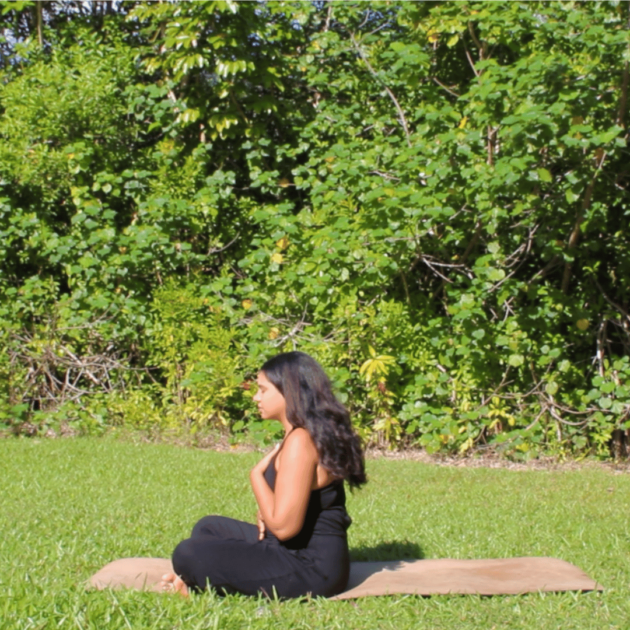
I love to start yoga classes with a grounding breathing exercise. Even just taking a few slow breathes in and out can help you to tune into your body before you start flowing.
Consider trying the box breathing exercise:
- Breathe in slowly for four counts
- Hold your breath for four counts
- Breathe out slowly for four counts
- Hold your breathe again for four counts
- Continue this pattern for as many cycles as you wish.
2. Seated cat and cow poses
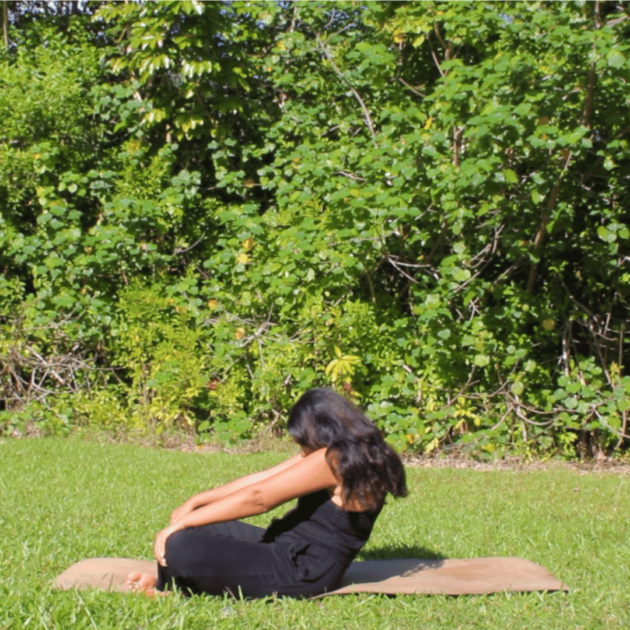
Sitting with your legs crossed, bring the palms of your hands to your knees. Rather than doing this posture on your hands and knees, it can be an interesting sensation to try it seated.
Draw your belly button in towards your spine as you tuck your chin. Then puff your chest and belly out as you lift your chin towards the sky.
Feel free to add in some organic movements like going in circles around your spine or stretching your neck side to side.
{RECOMMENDED POST: The Best Beginner Yoga Poses for Lower Back Pain and Hips}
3. Folded bound angle (Baddha Konasana)
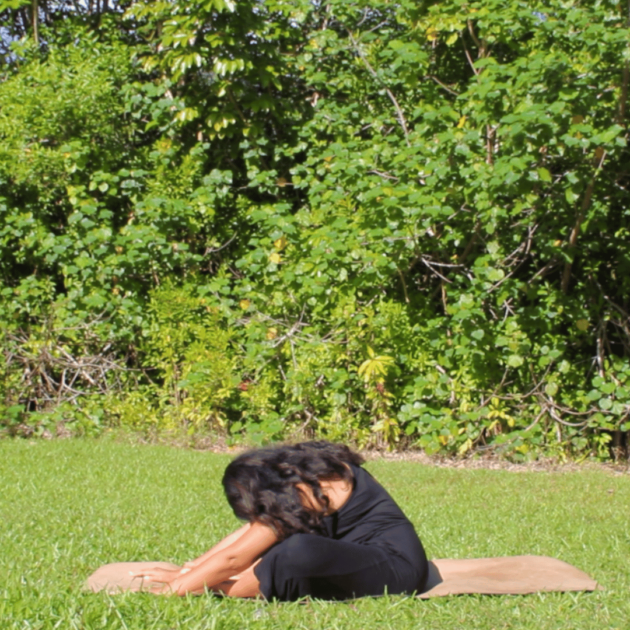
Draw the soles of your feet together and gently fold your upper body over your legs.
If you move your legs closer to your body it will intensify the stretch. When you move your feet away from your body it will lessen the intensity.
Gently look down towards your feet to stretch your neck. If you have a yoga block available you can place it under your forehead for extra support!
4. Cat and cow flow (Bitilasana & Marjaryasana)
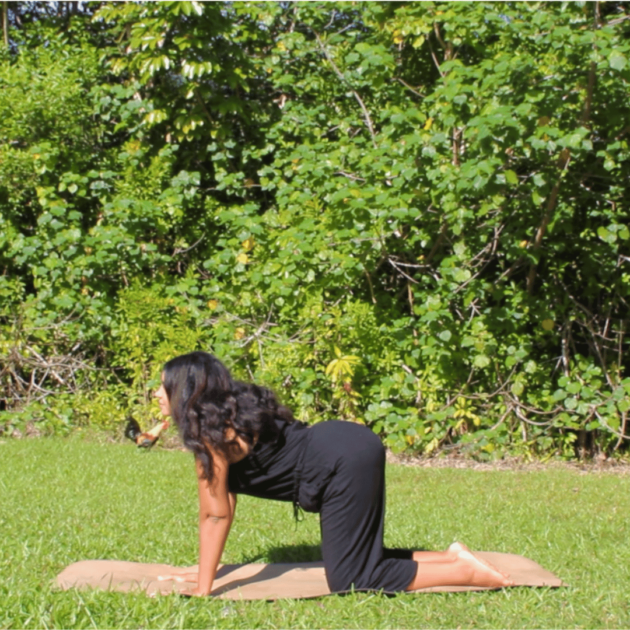
Basically every yoga class I teach includes these poses because they are just so beneficial!
Stack your shoulders over your wrists and hips over your knees. For cow post allow your belly to fall towards the earth as your tailbone sticks up towards the sky. Gently lift your chin up towards the sky as well.
For cat pose, draw your belly button in towards your spine and bring your chin towards your chest.
In both poses make sure you are firmly pressing into your hands and knees to stabilize yourself.
5. Gently peddling your legs in down dog (Adho Mukha Svanasana)
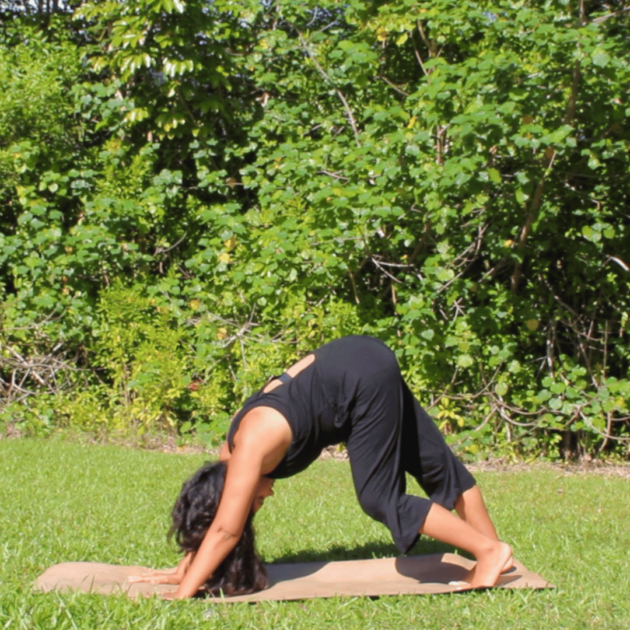
It’s so easy to fly through a downward-facing dog because this pose is also found in most yoga classes and we grow so accustomed to it.
Take some time to peddle out your knees (bending one knee then the other).
Experiment with widening your hands and feet to the edge of your mat. You could even try a down dog with your hands closer to your feet and then farther away.
Always be sure to press firmly into your hands and draw your upper body towards your knees.
Your heels never need to touch the earth but if you are looking for a calf stretch, that can help!
6. Low lunge pose (Anjaneyasana)
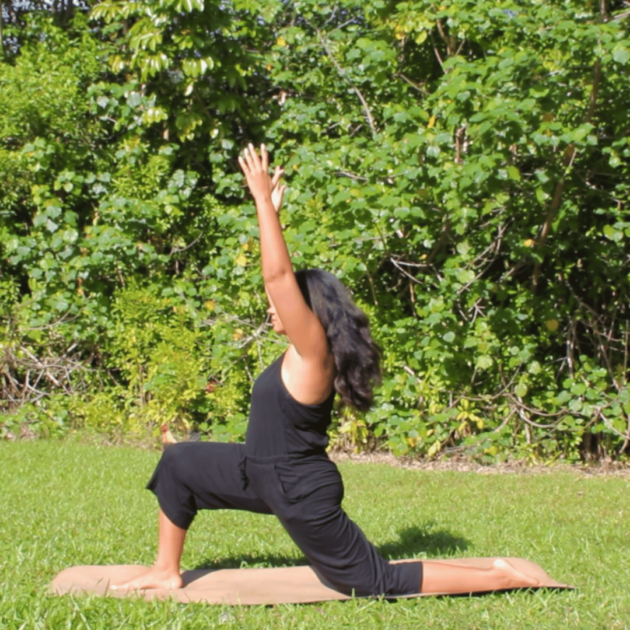
Step one foot in front of you and allow your opposite knee to rest on the earth. Maintain a 90-degree angle in your front knee and you enjoy a stretch in your opposite leg.
Choose whatever arm variation feels best in your body.
You can raise your hands up over your head, place them on your lower back, rest them on yoga blocks, and place them on your knee.
{RECOMMENDED POST: 12 Practical Tips For a Consistent Yoga Practice}
7. Lizard pose (Utthan Pristhasana)
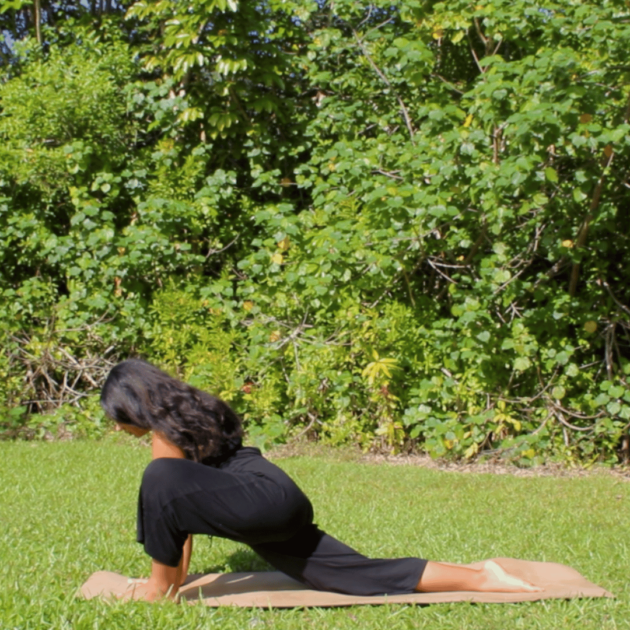
Transition from a low lunge by moving your front foot closer to the edge of your mat. This allows more space for your hands to rest on your mat next to your foot.
Lifting your hips farther away from the earth will lessen the intensity. Yoga blocks are super helpful in this pose as well since they bring the ground closer to you!
If you’re looking for a deeper stretch you can bring your elbows down onto the earth.
8. Revolved lunge pose (Parivrtta Anjaneyasana)
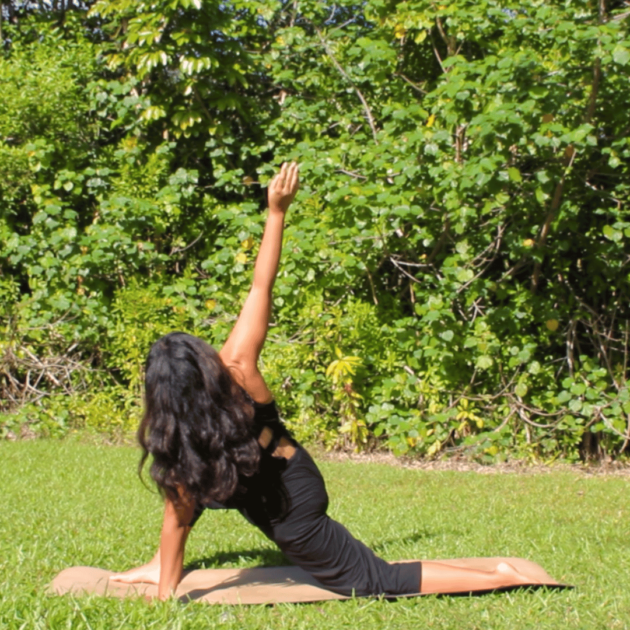
Keep your lower body in lizard pose but bring the hand opposite to your front knee to the center of your mat.
Allow your hips to fall closer to your mat as you lift your opposite hand up towards the sky.
Widen through your chest and open your fingers wide to give them a nice stretch as well. You can modify this pose by placing your hand on a block or on your knee.
9. Cobra pose (Bhujangasana)
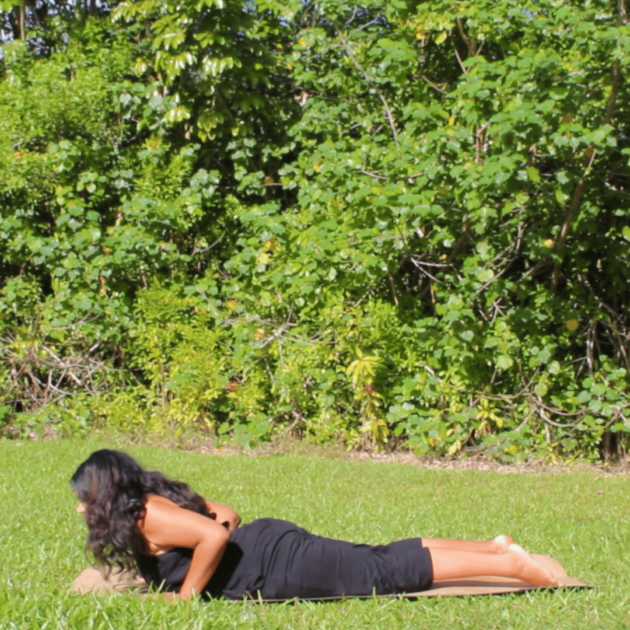
Make your way onto your belly and bring the palms on your hands onto your mat under your shoulders. Press into your hands as your upper body lifts away from the earth.
You don’t have to go super high in this pose! You will still reap the benefits of stretching your chest even at a lower level.
Squeeze your inner thighs together and allow the tops of your toes to rest behind you. If you feel a sharp pinch you have gone too far. Ease out of the pose.
10. Upward-facing dog (Urdhva Mukha Svanasana)
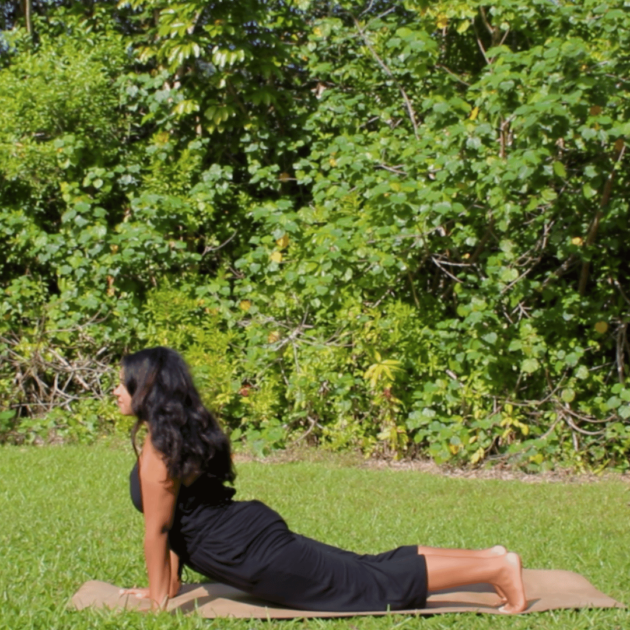
For a bit more intensity than a cobra pose, you can press deeper into your hands and lift your thighs away from the earth.
Traditionally your toes are untucked and pressed into your mat. For a different sensation you can experiment with tucking your toes and shifting forward and back.
This slow yoga flow is all about experimentation and allowing yourself space to savor each pose rather than rushing through them.
See what feels best in your body!
{RECOMMENDED POST: 5 Practical Tips For Finding Affordable Yoga Classes}
11. Child’s pose (Bālāsana)
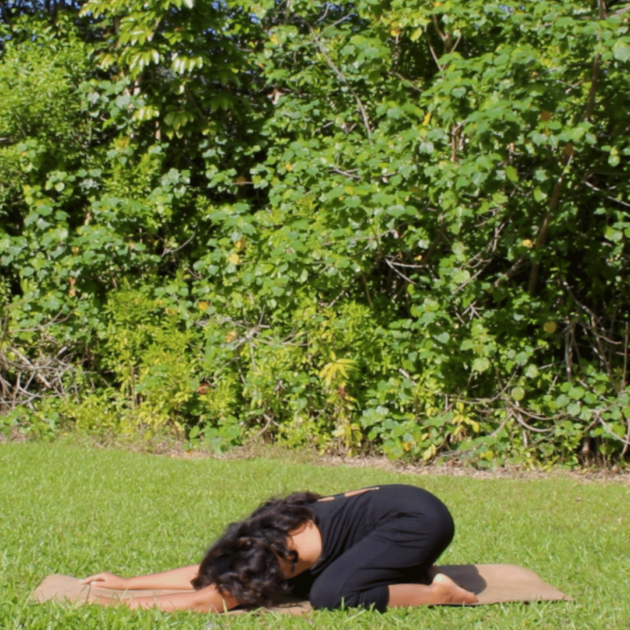
Time to slow things down even more! Bring your knees out wide to the edge of your mat and draw your toes together behind you.
Rest your forehead on the mat in between your arms and stretch your arms out in front of you.
Take long, slow breaths as your body begins to cool down and prepare for your final pose.
12. Knees to chest pose (Apanasana)
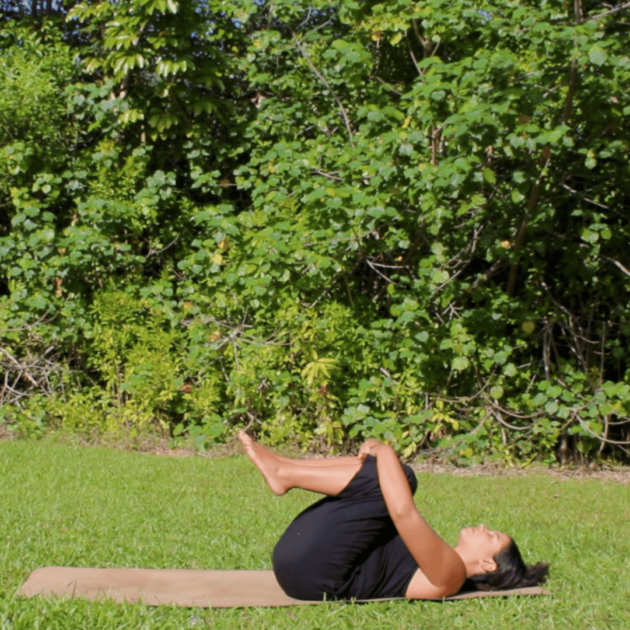
Make your way onto your back and draw your knees in towards your chest. If you widen your knees and bring your hands toward your knees it will lessen the intensity.
But if you bring your knees to greet and wrap your arms fully around your legs it will intensify this pose. You can rock side to side or up and down your spine for a gentle back massage.
When you feel ready, release your arms and legs to enter into your Shavasana pose.
Shavasana pose can be the hardest yoga pose of them all. As we no longer need to think through the physical poses, our minds can run wild. Allow thoughts to come and go like clouds in the sky but you don’t need to grasp onto them. Keep taking slow deep breaths and stay in this resting pose as long as your day allows!
Slowing down is powerful and I hope this practice helps you to see and feel that!
Have any other questions about reaping the benefits of a slow flow yoga sequence? Let me know in the comments below! I’m happy to help!
Stay well,
Maggie
This post was all about slow flow yoga sequence for beginners.
Other yoga posts you may like:
How to Create a Peaceful Yoga Corner in Your Home
10 Brilliant Yoga Storage Ideas To Organize Your Yoga Room
How To Prepare for Hot Yoga Class For Beginners
The Best Yoga Poses For Beginners For Your Morning Routine
If you would like to save this gentle yoga flow sequence post for later-pin it!
